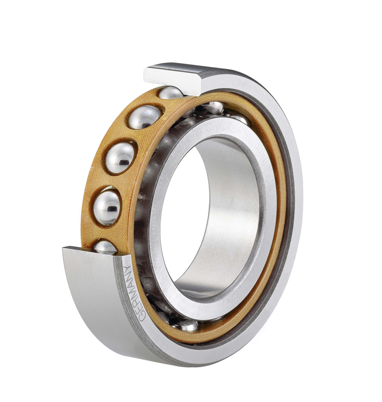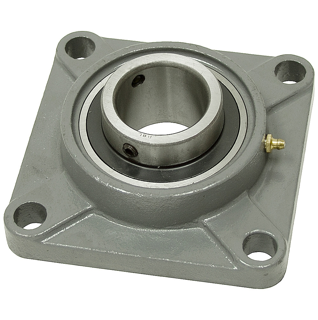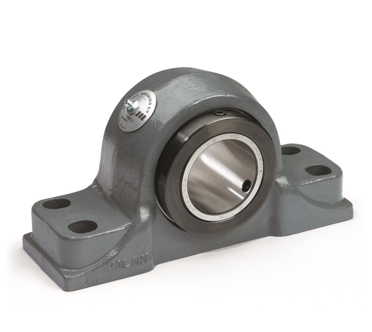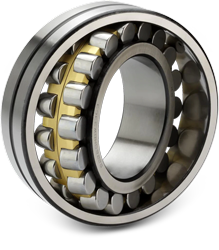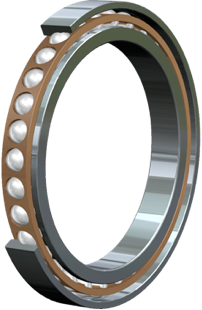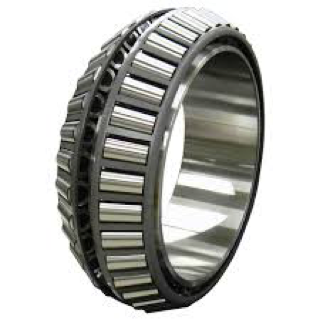Everything You Should Know About Wheel Bearings
Automotive Wheel Bearings are essential parts of wheels as they allow them to spin freely and connect wheels with the car securely. One wheel bearing is used in each wheel and if any of the four automotive wheel bearings wear out or gets damaged then you will feel shaky control and steering that could be dangerous. It is highly recommended to not drive the vehicle if any of the automotive wheel bearings are not working but rather use our online bearing finder to find unbeatable replacement wheel bearing prices. Although it depends on the type of vehicle you are driving and what the mechanic suggests based on the wheels of your vehicles when they replace wheel bearings, there are some common types of automotive wheel bearings that are usually used in modern cars.
What are SKF Wheel Bearings?
SKF which is a prestigious name in this industry and known for it's highly quality replacement ball bearings also manufactures wheel bearings. SKF designs wheel bearings for racing cars and those vehicles need highly precised apparatus to work properly while delivering high performance. The company also manufactures wheel bearing with custom dimensions and specifications. It is also known for providing custom solutions for automobile applications and special materials like silicon nitride rolling elements and peek. Angular ball bearings are used as wheel bearing in automobiles and with the use of specialized software and high end technologies, SKF calculates the exact specification needed for wheel bearings.
Wheel bearing are optimized for high performance, friction-less movement and stiffness. Most of the wheel bearings used in cars comes with shields and seals which make sure the lubrication stay in and the apparatus remains safe from containment like humidity and dirt. Usually these bearings are made for long term use but external factors can affect their overall performance and life that means regular maintenance to replace wheel bearings is required. Because of the special requirements of high performance vehicles, highly precised wheel bearing are developed with high load capacity that enables the vehicle to do tight cornering even at high speed.
It is necessary to use same kind of wheel bearing in all wheels for maximum efficiency, performance and reliability. Additionally, SKF manufactures Hub Bearing Units which come with X-Tracker design, significantly higher contact angle as well as shoulders for maximum load bearing capacity, ceramic ball bearings to reduce the overall friction and increasing the performance, shields and seals that protects the lubrication and apparatus as well as high performance lubrication for high temperature.
How to check car's wheel bearings?
If you have a little know-how of automobiles then you can check the automotive wheel bearings of your car yourself without any external help. You can see whether those automotive wheel bearings need be to be repacked or not. As lubrication like grease is used in automotive wheel bearings for friction-less motion, it picks up containment like dirt and dust while humidity also damages the apparatus. These containment damage automotive wheel bearings after a while and one damaged wheel bearing can have negative effects on others as well as it put the driver in danger.
It is important to know that non-drive wheels of a vehicle that are front wheels in a rear drive vehicle and rear wheels in a front drive vehicle come with re-packable wheel bearing. On the other hand, wheel bearings in an all-wheel drive vehicle are quite complicated and they should be checked professionally. If you have drum brakes then you can easily make sure whether the grease is still inside and if it isn't then you can repack wheel bearings yourself. Yet in disc brakes case, you need a professional to do the job because an improper assembly of braking system can put you in danger while on road.
Jack up your car and support it with stands, you don't have to go under the car but instead simply grasp each wheel one by one and try to shake it. If there is minimal or no movement at all then it is fine, if there is excessive movement then either something is not tighten or your wheel bearings are damaged as they are not properly aligned. In both cases you need a professional to diagnose the problem. Put your car in neutral or out of gear and rotate each wheel in both directions one by one.
Now listen to any kind of unusual sound or noise that shouldn't be there. An unusual noise could be an indication of damaged wheel bearings. Also try to feel any kind of roughness while rotating the wheels, if there is one then you need to replace a wheel bearing. Make sure you put your car into park or gear before lowering it.
How to replace wheel bearings?
It is better to let professional do their job but if you have prior knowledge of vehicles and you love repairing them then there is no harm in doing wheel bearing replacement yourself because it is not that difficult. It is important to know that you can replace non-drive wheels but you cannot work on drive-wheels on your own because they are complicated. Non-drive wheels refer to front wheels of rear wheel drive vehicles and rear wheels of front drive wheel vehicles. In most of the cases we don't even have the slightest idea whether we need to replace wheel bearings but automobile manufactures recommend that after 30,000 miles is when to replace wheel bearings.
In order to replace wheel bearings by yourself, you need new automotive wheel bearings, automotive wheel bearings grease, rags, tools to disassemble different parts and safety glasses. Make sure the car is parked on a flat surface rather than an inclined surface before you jack it up. First remove the wheel by unscrew all the lug nuts, this part is very simple and easy. Now remove the brake caliper by using a socket but make sure you do not let it dangle in the air because it might damage the brake hose.
Now remove the dust cover that could be plastic or metal cap that protects components from dust and other containments. You might need calipers and hammer to remove it from the rotor. Remove the outer bearing and remove the rotor after that. Do not use hammer or any other metal tool to move stuck rotor because it could damage it but instead use rubber mallet if necessary. Remove the hum and disassemble it to remove inner bearings and clean raceways with rugs because installing new ones.
Apply lots of grease on both raceways and you can use your hands for this purpose if you don't have a special tool made for this purpose. Now do all the previous steps in reverse order to put everything in order. After you are done, rotate the wheel by hand and try to shake it to see if there is misalignment. Put your vehicle into parking or in gear before lowering it back to the ground.
Why you need to replace wheel bearings?
Although different automobile manufacturers provide details about the time frame of wheel bearing replacements and usually a vehicle need to replace wheel bearings after 30,000 miles but circumstances can change because of some particular reasons. You might need new automotive wheel bearings because of poor installation of previous automotive wheel bearings, damaged wheel bearing seal that could be caused by several factors including driving conditions that cannot be predicted and most commonly because of automotive wheel bearing damage caused by an accident.
Damaged or worn wheel bearings usually make noise and it is easier to diagnose the problem but in some cases they just reduce the overall performance of the vehicle. Obviously if there is no sound or vibration, it will be difficult for you to find out the problem and visit to a repair shop for no apparent reasons could be costly and time consuming too, but you can check automobile wheel bearings yourself.
On the other hand, automotive wheel bearings are designed and installed for life, if you just had to replace wheel bearings in the last year or few months ago then it is highly unlikely you need another wheel bearings replacement now unless there was an accident or obvious reason behind it.
Symptoms of bad wheel bearing
Fortunately there are several signs of bad wheel bearing that you can hear, see or feel but some of these symptoms appear when the damage is done. In fact one bad wheel bearing can damage the other three too because of imbalance while driving and overall disturbed equilibrium. Additionally, it is quite difficult to predict when a wheel bearing will wear out because it depends on some factors that can be measured and some that couldn't. For example, you can do your best to replace wheel bearings by installing the best quality wheel bearing available and get best installation services to minimize the installation errors but the life of a wheel bearing is mostly depends upon driving conditions.
Clicking or snapping sound
Usually this could happen because of a damaged or worn outboard CV joint but it is also related to damaged wheel bearings. If the sound is coming from rear wheels in a front wheel drive vehicle then it is highly likely that the wheel bearing is damaged. If you hear this sound while cornering to during sharp or U-turns then it might be because of CV joints.
Grinding when moving fast
This means at least one of the wheel bearings is damaged severely and it might cause damage to other wheel bearings because of the imbalance. Most of the mechanical damages in the wheel are because of worn wheel bearings. Grinding means the wheel bearing is either cracked of its raceways are damaged. You might experience this exclusively while turning because of the excessive load in that condition.
Knocking or clunking sound
Although this particular symptom is not directly associated with wheel bearing damage because it is caused by CV joints but you might confuse it with clicking or snapping sound that is caused by wheel bearings. The best way to distinguish these sounds is to find from where the sound is originating.
Wheel vibration at varying speed
This is one of the most common issue people experience and there are several possible causes of this symptom. Usually this is caused because of worn tire or damaged wheel, if tires and wheels are fine then it could be because of misalignment or loose lug nuts. If everything else is fine then it could be associated with damaged wheel bearing. If you feel heavy vibration at slow speed and the vibration gets low at higher speed then it is because of worn automotive wheel bearings and you need to replace the wheel bearings.
Wheel vibration at constant speed
This is entirely different than wheel vibration at varying speed because of different cause. Commonly this issue is caused by out of balance tire or because of suspension components that are either damaged or not properly tighten. Usually this particular problem is not associated with any kind of bearing or hub issues.
Haven't found what you want? Look here:



